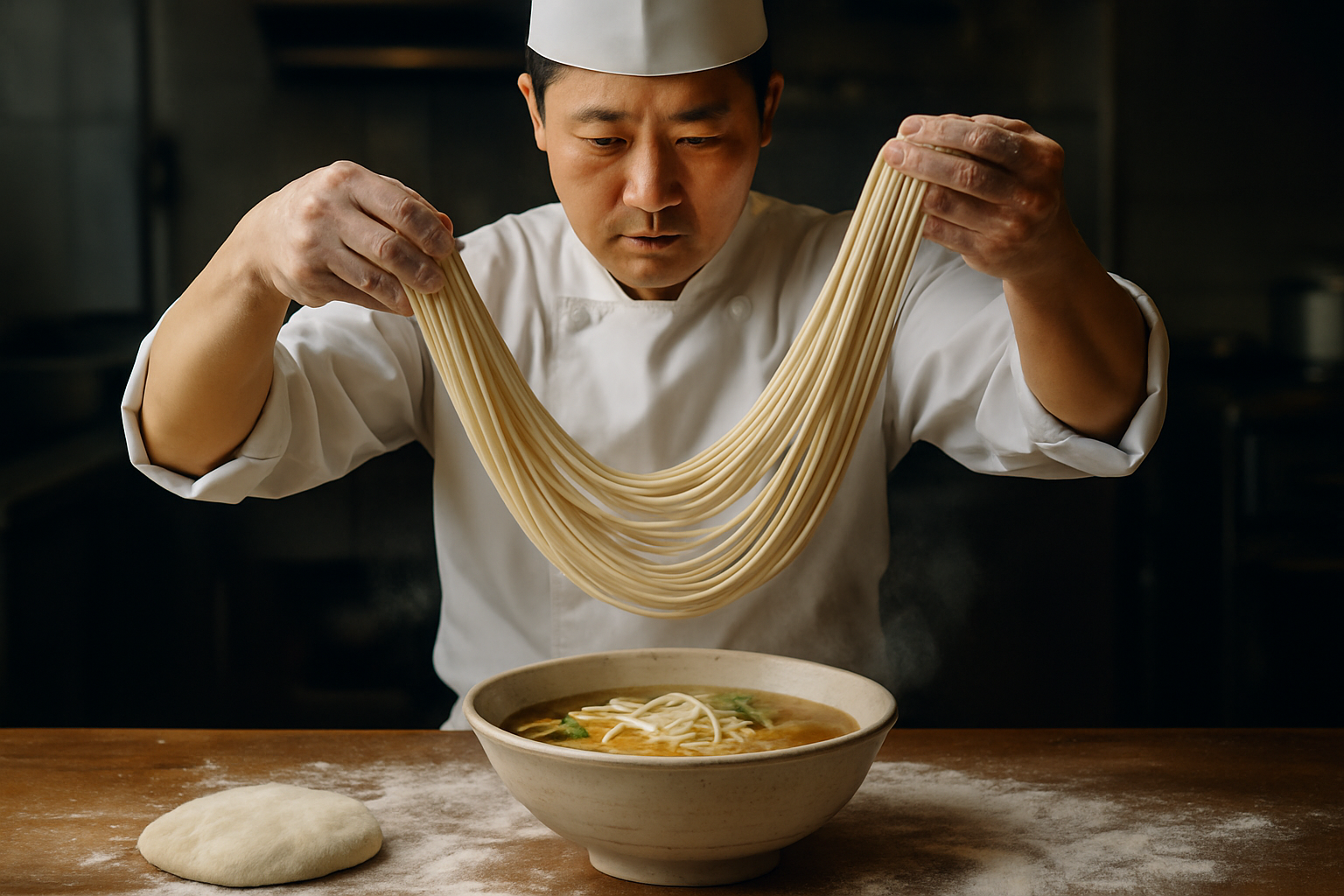Noodle Pulling: The Art of Hand-Stretched Pasta
Twirling, stretching, and folding dough into silky strands of noodles is a culinary spectacle that's as mesmerizing as it is delicious. Noodle pulling, an ancient technique rooted in Chinese cuisine, has evolved into a global phenomenon, captivating food enthusiasts and chefs alike. This article delves into the fascinating world of hand-stretched noodles, exploring its history, techniques, and modern interpretations.

From Street Food to Fine Dining
While traditionally associated with casual eateries and street food stalls, hand-pulled noodles have found their way into high-end restaurants. Innovative chefs are elevating this humble technique, incorporating unexpected ingredients and presenting noodles in avant-garde dishes. Some are experimenting with colorful vegetable-infused doughs, creating vibrant noodle rainbows. Others are pushing boundaries by applying the technique to non-wheat flours, resulting in gluten-free alternatives that maintain the characteristic chewiness. This fusion of tradition and innovation is breathing new life into an age-old craft, appealing to both purists and adventurous diners.
The Science Behind the Stretch
Understanding the science behind noodle pulling is key to mastering the technique. It all comes down to gluten, the protein network that gives wheat dough its elasticity. As the dough is worked, gluten strands align and strengthen, creating a structure that can be stretched incredibly thin without breaking. The repeated folding process creates layers within the noodles, contributing to their unique texture. Temperature and hydration levels play crucial roles too; warm dough is more pliable, while the right amount of water ensures optimal elasticity. This delicate balance of factors is what makes hand-pulled noodles a true test of a chef’s skill and understanding of dough dynamics.
Global Variations and Regional Specialties
While China is the birthplace of hand-pulled noodles, the technique has spread across Asia and beyond, each region adding its own twist. In Lanzhou, China, beef noodle soup featuring hand-pulled noodles is an iconic dish. Japanese ramen shops often showcase live noodle-pulling performances. In Korea, kalguksu noodles are hand-cut rather than pulled, but share a similar artisanal approach. Even in Italy, some pasta makers are adopting hand-pulling techniques for certain regional specialties. This global spread has led to fascinating fusions, with chefs combining traditional pulling methods with local ingredients and flavors, creating unique culinary experiences that bridge cultures through noodles.
The Future of Noodle Pulling
As we look to the future, noodle pulling stands at an exciting crossroads of tradition and innovation. With the rise of social media, videos of noodle masters at work have gone viral, sparking renewed interest in this ancient craft. This has led to a new generation of chefs and home cooks eager to learn the technique. Simultaneously, technology is being developed to replicate the hand-pulling process, aiming to scale up production while maintaining quality. However, purists argue that the human touch is irreplaceable. As we move forward, the challenge will be to preserve the artistry and skill of hand-pulled noodles while embracing new ideas and technologies that can help this tradition thrive in the modern culinary landscape.
Noodle Pulling Insights
• The ideal dough for hand-pulled noodles contains high-protein flour, water, salt, and sometimes kansui (alkaline water).
• Expert noodle pullers can stretch dough to over 5 feet in length with a single pull.
• The number of pulls determines the thickness of the noodles, ranging from hair-thin to wide, flat strips.
• Hand-pulled noodles cook faster than machine-made varieties due to their fresh, non-dried nature.
• Some noodle masters can create over 100 servings of noodles in under 15 minutes.
As we’ve explored the intricate world of hand-pulled noodles, it’s clear that this technique is more than just a method of food preparation—it’s an art form, a science, and a cultural touchstone. From its ancient origins to its modern interpretations, noodle pulling continues to captivate and inspire. Whether you’re savoring a bowl of hand-pulled noodles at a local eatery or attempting the technique in your own kitchen, remember that each strand carries with it thousands of years of tradition and countless hours of practice. So the next time you twirl those perfectly chewy noodles around your chopsticks, take a moment to appreciate the skill, dedication, and artistry that went into creating this simple yet extraordinary culinary delight.




